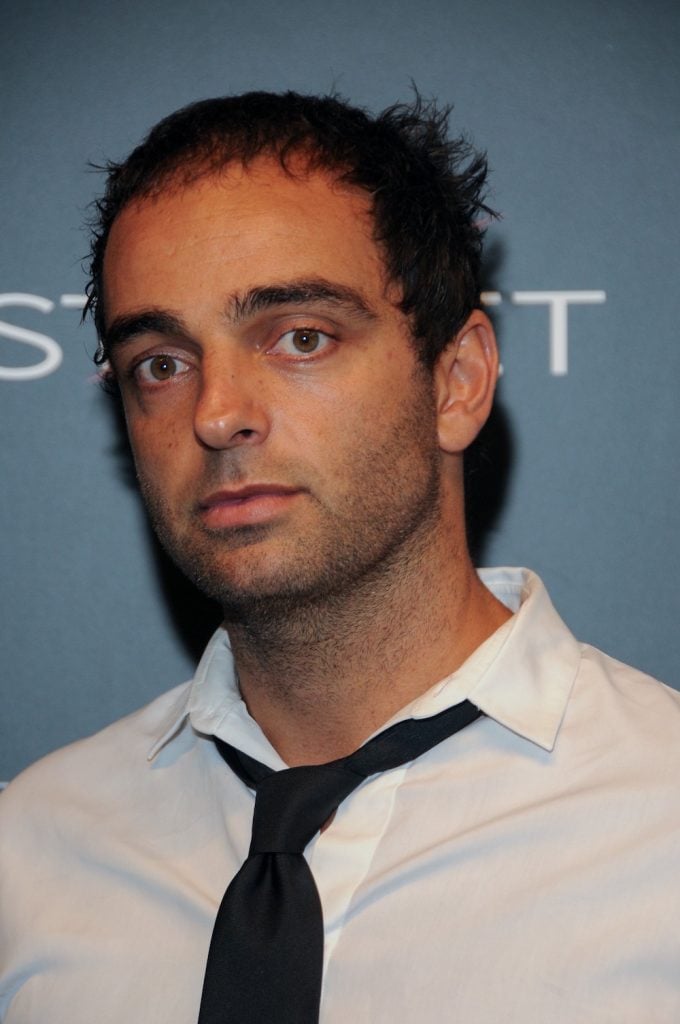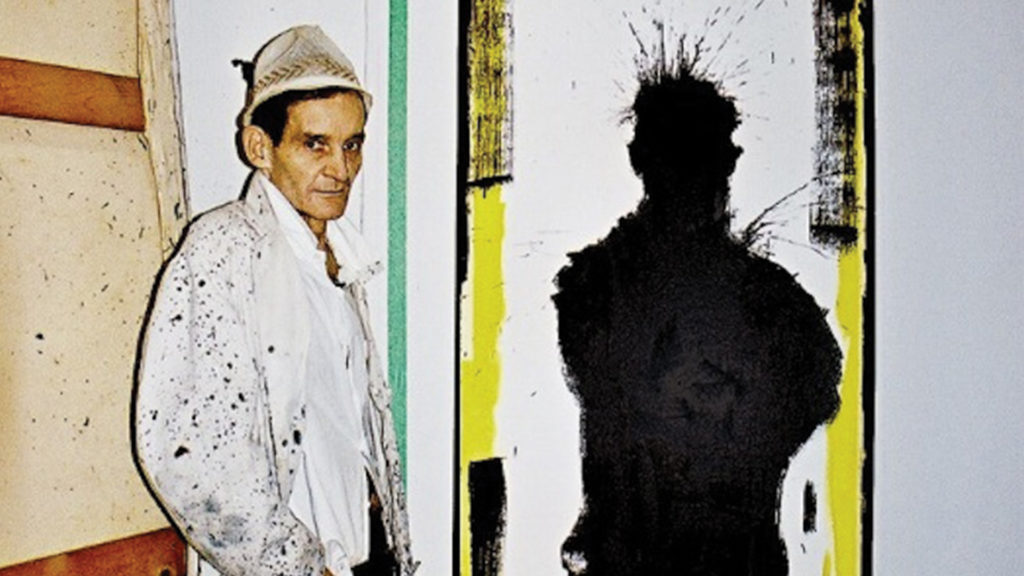Law & Politics
In the Name of Public Interest, a Jersey Court Released Details of Art Entrepreneur Andrew Valmorbida’s ‘Serially Dishonest’ Dealings
The court's release is unusual, as it comes in the wake of a civil settlement.

The court's release is unusual, as it comes in the wake of a civil settlement.

Eileen Kinsella

The only thing more surprising than the list of financial misdeeds reportedly committed by art dealer Andrew Valmorbida in the course of doing business with a billionaire client is the manner in which they were recently revealed.
The London-based entrepreneur Valmorbida was hit with a civil lawsuit for breach of agreement (contract) by financier Christian Hore in Jersey, in the Channel Islands, earlier this year. Following a trial in the country’s Royal Court, the two settled on confidential terms this past summer, before a judgment was reached.
But the panel tasked with the judgment—identified in court documents as R. J. MacRae, Esq., deputy bailiff, and Jurats Robert Anthony Christensen and Elizabeth Anne Dulake—deemed the evidence presented at the trial, much of it by Valmorbida himself, important enough to publicly release the details on September 30. The panel furnished a lengthy explanation, including case history and precedents, for rejecting requests by Valmorbida’s attorney to refrain from publicly releasing their judgment after a settlement had been reached.
The panel cited multiple reasons for this unconventional release, including that the case involved various points of law which are “of substantial general interest, particularly in a jurisdiction such as this with a major financial services industry.” Furthermore, they write, “It is very much in the public interest for a person with Mr Valmorbida’s profile to have his dealings exposed,” as Valmorbida “appears still to own companies in Jersey and has service providers looking after his interests. It is important that they know of the findings that the Court has made in this case.”
Per the panel, the proceedings showed Valmorbida as “a man who was serially dishonest….When he was cross-examined, he was revealed to be dishonest, evasive, and accepted that he had both used and created false documents.” Valmorbida’s testimony was damning enough that even before closing arguments, his lawyer, James Gleeson, was forced to concede that “in light of the evidence at trial Mr Valmorbida had indeed made fraudulent misrepresentations.”
Neither Hore nor Valmorbida could be reached for comment.

Richard Hambleton in the 2017 documentary Shadowman. Photo: Hank O’Neal.
It is not the first time Valmorbida has been in the news lately; just last week, he figured prominently in a New York Times story about his role in the resurgence of the late street artist Richard Hambleton, who rose to fame in New York in the 1980s with his distinctive “Shadowman” works that cropped up on buildings all around New York.
Valmorbida was described as a London-based art entrepreneur and self-proclaimed art world “disrupter” who has collaborated with P. Diddy. Twelve years ago, he also worked with Vladimir Restoin Roitfeld, the son of former French Vogue editor Carine Roitfeld, when they convinced Giorgio Armani to fund a Hambleton retrospective that traveled to Milan, the Cannes Film Festival, Moscow, and New York.
Valmorbida acquired the copyright to all of Hambleton’s original work in 2017, the year he died, in a $1 million deal paid to the artist, and said that he owns the intellectual property rights “perpetually, irrevocably and exclusively” to do anything except create fakes to sell. Valmorbida is reportedly planning an immersive Hambleton art experience along the lines of the many touring Banksy shows.
Now Valmorbida’s other activities over the past decade are drawing fresh scrutiny. Among the laundry list of wrongdoings in the Jersey court document, Valmorbida is said to have made false representations to several lenders, including Sotheby’s, Fine Art Group, and Falcon Fine Art (which Fine Art Group acquired in 2019), and Investec in order to obtain loans using artworks as collateral.
Sotheby’s declined to comment. Investec did not respond to an email. A source close to the Valmorbida family told Artnet News that two of the lenders named, Falcon and Investec, had never made loans, and that the loans by Sotheby’s and Fine Art Group had been fully repaid. Fine Art Group told Artnet News in an email, “We have not had any involvement with Andy Valmorbida for a number of years, and we are not involved in any actions against him.”
According to the document, Valmorbida made several representations which he knew to be false to Falcon Fine Art, London, in January 2018, in order to secure a $6.5 million loan. He offered as collateral paintings worth millions of dollars, which he said were part of his personal art collection; however, the court found, they “in large measure were not.”
In this instance, the court papers note two defendants, Valmorbida himself and an entity referred to as “Untitled – Copyright Limited,” a holding company he controls, which also had various ownership stakes in the paintings.
Around the same time, Valmorbida made similar claims to the Fine Art Group to secure a $5.5 million loan. He admitted in court to using a painting consigned to him by a client as security without permission, as well as a Frank Auerbach painting that he also did not own, for which he directed a forged invoice be created. He also used falsified invoices to assert that he owned paintings by Francis Bacon and Jean-Michel Basquiat. When the loan was approved, the $5.5 million he obtained was paid to his own personal bank account in the Isle of Man, another self-governing British Crown Dependency, the document states.
The document makes similar allegations about statements presented to Investec, though the amount of the loan was not specified.
In court, Valmorbida also admitted to making false claims to Sotheby’s in pursuit of a $6.7 million loan in September 2018, paid to his personal account. Valmorbida told Sotheby’s that he owned the works used as collateral and “would not sell, assign, pledge, transfer or encumber the artwork.” However, some of the artworks cited as security to Sotheby’s were owned by his Untitled holding company and had already been pledged to Hore as security under another agreement; another was owned by an unidentified third party.
Nor were Valmorbida’s alleged infractions limited to loans. He also admitted that he retained proceeds from the sale of certain works in his personal account that should have been shared with both Hore and the holding company, including for a sale of a painting by George Condo for $6 million.
According to the court, Valmorbida had promised around October 2018 to pay Hore, via three installments, various sums related to seven artworks which he had affirmed “not to sell, assign, transfer, mortgage, charge or deal with in any manner until the total sum due under the agreement was paid.” Yet of the seven works of art listed, with a value of $14.8 million, Valmorbida had already sold two, retaining the proceeds, and pledged four to Sotheby’s in connection with the aforementioned loans. Just one work was left “unencumbered and unsold,” with a value of $500,000.
The court papers also detail two instances with respect to “flipping” paintings, in which the dealer altered invoices, to the tune of $200,000 each time, “so as to deceive the buyer.” (Marking up the price of artworks is arguably not illegal, but altering invoices can be.)
The court said the legal papers in the case “will be transmitted to the Attorney General of Jersey for his consideration as to whether or not they should be sent to the Director of Public Prosecution.”